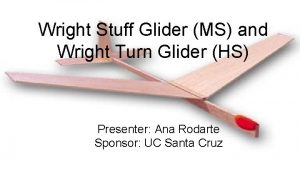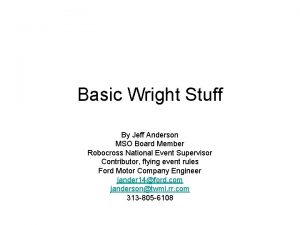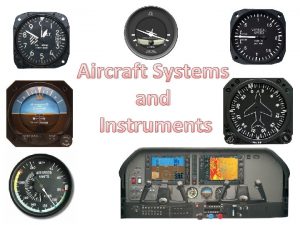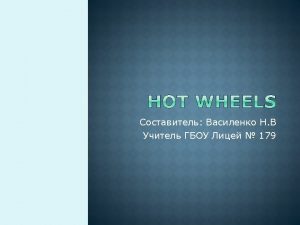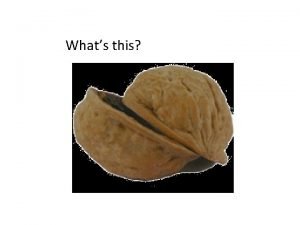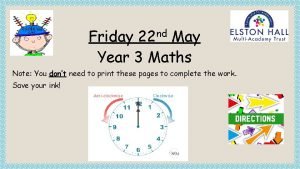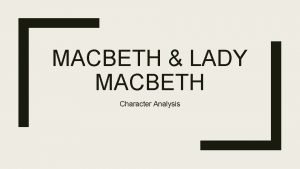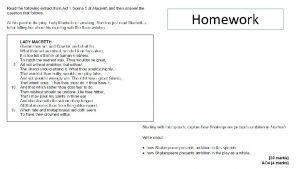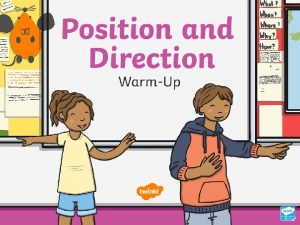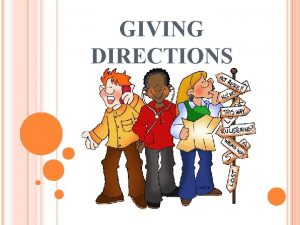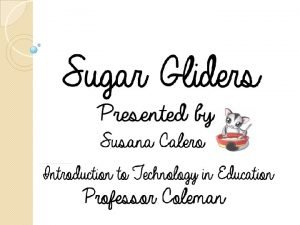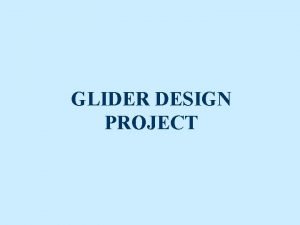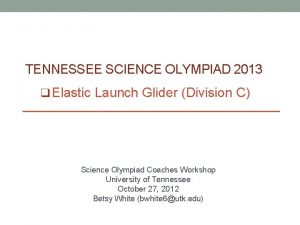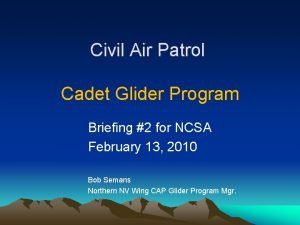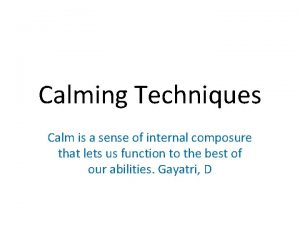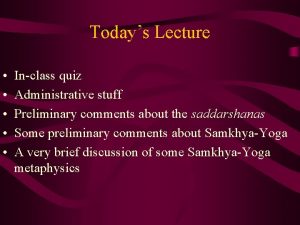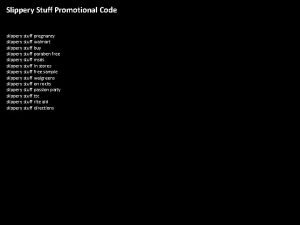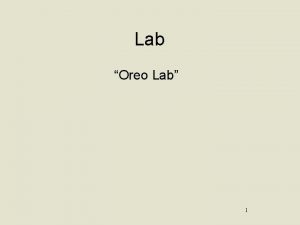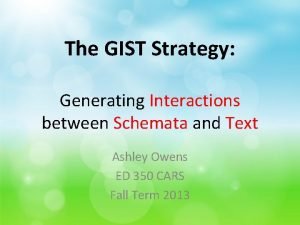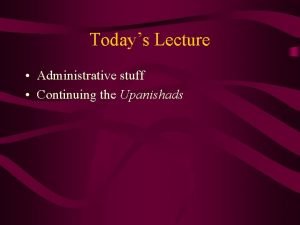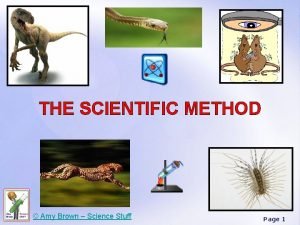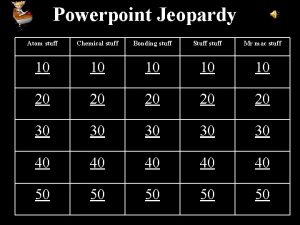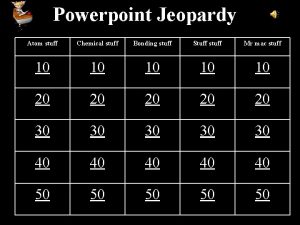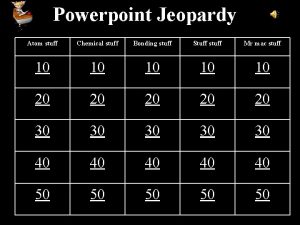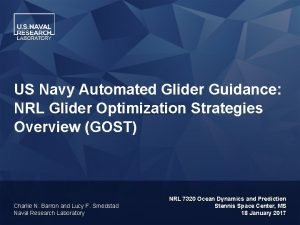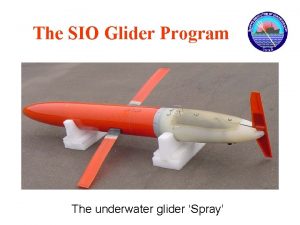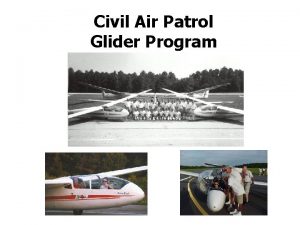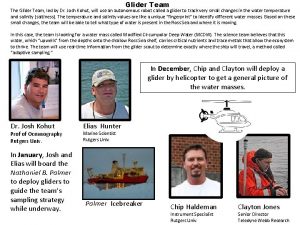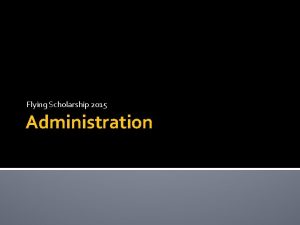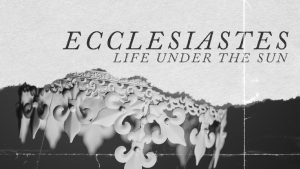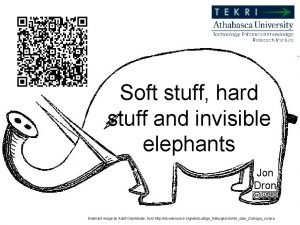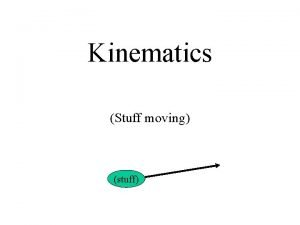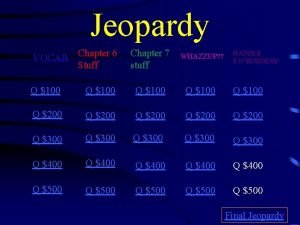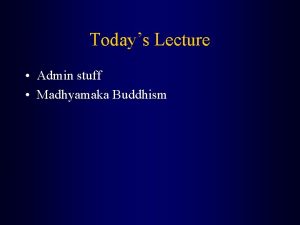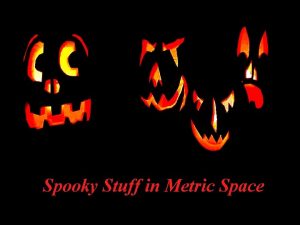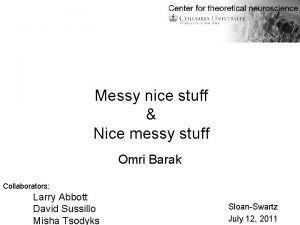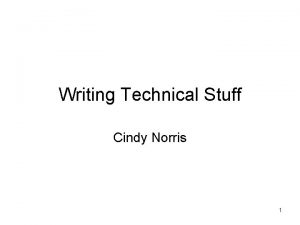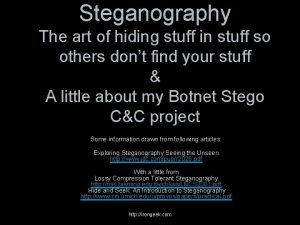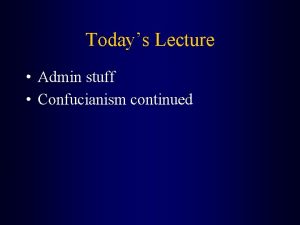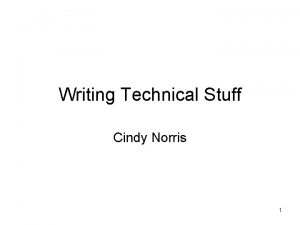Wright Stuff Glider MS and Wright Turn Glider































- Slides: 31

Wright Stuff Glider (MS) and Wright Turn Glider (HS) Presenter: Ana Rodarte Sponsor: UC Santa Cruz

Contest Objective ● Wright Stuff Glider (MS) ○ Students will design and construct a glider that, when launched flies through the air and lands on a target located 12. 2 meters (40 feet) away from the launch area. ● Wright Turn Glider (HS) ○ Students will design and construct a glider that, when launched flies through the air, makes a right turn, and lands on a target located 12. 2 meters (40 feet) away and to the right from the launch area.

Glider Differences Wright Turn Glider (HS) ● 8. 6 meters (28. 2 ft) directly in front of where the hook stops on the ramp ● 8. 6 meters (28. 2 ft) directly to the right ● This forms a right triangle with the hypotenuse being 12. 2 meters (40 ft) Wright Stuff Glider (MS) ● 12. 2 meters (40 ft) directly in front of where the hook stops on the ramp ● No Turns. Straight shot.

Materials For both glider competitions, all materials are legal except for: ● Power (Thrust, Lift, or Stored Energy) ● Remote Controls ● Prefabricated Gliders ○ You can use parts of a kit, but not the entire kit as provided. Suggested Materials: ● Balsa wood: Light wood that helps with flight, but is delicate to work with (breaks easily). ● Modeling Clay: Some clay at the tip of the nose adds weight ● Glue: Any type

Contest Overview ● Glider MUST be properly labeled and include: the first and last name of all team members, school name, grade level, MESA Center name, and a red dot to identify the glider feature that will adapt to the laucher hook. A 10% penalty will be given to gliders that are not properly labeled. ● Gliders checked in with a tie-on label will be tested with the label attached. ● Teams must be ready within 30 -seconds of being called by judges. ● Each team will have 2 non-consecutive launches and 2 minutes to set-up for each trial. Teams will receive a 5 -second count-down before the launcher’s trigger is released. ● Both launches will be timed (to be used as the tie-breaker only). The glider with the longest single flight time will be declared the winner. A glider’s hang-time will be recorded, at a minimum, to the nearest hundredth of a second. ● Gliders MUST remain in the impound when not being repaired or launched. ● Ideally, the glider competition should be held indoors, but it depends on the spaces available.

Middle School & High School: General Rules

Middle School & High School: General Rules (cont. )

Middle School & High School: General Rules (cont. )

Disqualifications (DQs) and Scoring Disqualifications: The following disqualifications apply to both glider competitions: ● Parts breaking off during flight or takeoff ● Altering/Damaging the launch hook ● Not having the following identifiable components: ○ Fuselage ○ Wing ○ Tail Scoring: ● The best of the 2 non-consecutive launches make up your score (closest distance to the target) ● Launch Score = distance from target NOT distance traveled ● Final Score = Best single launch plus the possible ● If two teams have the same final score, then the glider with the longest single flight time will be the winner of the tie. ● Penalties (50% missing lab book, 20% incomplete lab book, and/or 10% improper labeling)

Event Management: Official Glider Launcher Components: ● Tension Spring (11”) ○ Mc. Master-Carr (Part Number: 9640 K 243) ○ $5. 59 (before tax) ● Launch Platform ○ Surface Size (length): 178 cm (58 inches) ○ Surface Size (width): 30. 5 cm (12 inches) ○ Made from ¼” thick composite board or comparable material ● Launch Hook: 0. 160” diameter ○ Mc. Master-Carr (Part Number: 9594 T 13) ○ $8. 25 (before tax)

Correct Type of Hook Wrong Type of Hook

Glider Launcher Overview Rear View Front View of Hook

How the Launcher Works

Event Management The following materials are needed to run the competition: ● Tables (6): ○ 1 six foot table for the Launcher ○ 1 six foot table for the Repair Station ○ 2 six foot tables for Impound for middle school ○ 2 six foot tables for Impound for high school ● Room for competition (recommended): Indoors (based on availability of facilities)

Event Management Recommendations in order to run the event the same way at all MESA Days. Do’s ● Number the teams and post-its before first launch ● Judges ○ 1 at impound station ○ 1 at repair station ○ 3 Time Keepers ■ 30 -second competition ready confirmation by team ■ 2 -minute set up with launcher ■ Hang time for each trial ○ 2 First-touch point spotters ○ 1 with launcher & gives 5 -second count-down ● Each contest has its own launcher; MS/HS are separate ● Have one launcher as back up. ● Post-Its from Office Depot to mark the first touch point of the glider. Dont’s ● Use a launcher without replacing the spring and hook. ● Try to run MS and HS competitions at the same time.

Middle School Gliders: Target

High School Gliders: Target




ANY QUESTIONS?


ANY QUESTIONS?


ANY QUESTIONS?

Aspect Ratio and Ideas for Student Activities

Aspect Ratio What is Aspect Ratio (AR)? AR is the ratio of the length of wings to their width ● Low Aspect Ratio ○ Go slower unless they have power to combat drag. ○ More manoeuvrable ○ More drag (opposition of aircraft motion through the air) ● High Aspect Ratio ○ Long Narrow wings give the plane more stability ○ Not very manoeuvrable ○ Less drag

Example Activity Coffee Stick Glider Overview: To familiarize students with the Aspect Ratio. Students will construct a makeshift glider using the following materials: ● Regular (Lined or Blank) Paper ● Coffee Stirring Straw or toothpick ● Tape or glue ● Scissors Have students design different shapes of wings and tails to see what the best design would be to a). Launch the farthest distance and b). Have the greatest hang time. Suggestions: When making the wings, keep in mind the aspect ratio. The Aspect Ratio of a wing is calculated by dividing the wing length by the wing width. Wing Length Wing Width

Hands-on Activity: Better by Design Each team will construct a glider and have four trials to record the distance traveled. After all four trials have been recorded, students will need to calculate the average distance traveled. The first trial is to get a base of characteristics for the glider (distance, measurements, etc. . . ). After each trial, students will be asked to change one controlled surface, but all else has to remain the same from the original design. For example, if you change the wing span in trial# 1, you must change it back to the original design in trial # 2. Materials: The following materials will be used for this activity: ● 1 sheet of 8. 5 x 11 cardstock paper ● Scissors ● 3 Large Paper Clips ● 1 Pencil ● 1 Ruler ● Optional: 1 calculator Activity Link

Labeled Glider Parts

More Resources: ● ● ● ● ● NASA’s Wright Index NASA’s Aerodynamic Index How Shape Affects Lift Inclination Effects on Lift Aerodynamic Forces Factors that Affect Lift Glide Angle UCSC Glider Demonstration Making Your Glider Turn
 Wright turn glider
Wright turn glider Science olympiad wright stuff kit
Science olympiad wright stuff kit Electric wright stuff
Electric wright stuff Atomato flames flaps
Atomato flames flaps You can't turn right here
You can't turn right here I throw my warlike shield
I throw my warlike shield Answer. go straight turn left turn right
Answer. go straight turn left turn right What is 1/4 turn clockwise
What is 1/4 turn clockwise Valiant cousin worthy gentleman analysis
Valiant cousin worthy gentleman analysis Macbeth seeing banquo's ghost quote
Macbeth seeing banquo's ghost quote Turn left and go straight
Turn left and go straight Turn hell hound turn
Turn hell hound turn Quarter turn half turn
Quarter turn half turn Go straight and turn left
Go straight and turn left How to tell if your sugar glider is pregnant
How to tell if your sugar glider is pregnant Glider project design
Glider project design Glider horizontal stabilizer
Glider horizontal stabilizer Glider horizontal stabilizer
Glider horizontal stabilizer Elastic launch glider
Elastic launch glider Cap ncsa
Cap ncsa Gravity glider brain gym
Gravity glider brain gym Feelings and opinions are the “stuff” poetry is made of
Feelings and opinions are the “stuff” poetry is made of Administrative stuff
Administrative stuff Stuff that happened in 2001
Stuff that happened in 2001 Walmart slippery rock pa
Walmart slippery rock pa Limiting reactant shortcut
Limiting reactant shortcut Gist strategy
Gist strategy Nirguna
Nirguna Amy brown science stuff
Amy brown science stuff Leading at the edge summary
Leading at the edge summary Scientific notation graphic organizer
Scientific notation graphic organizer Sagan we are made of star stuff
Sagan we are made of star stuff
